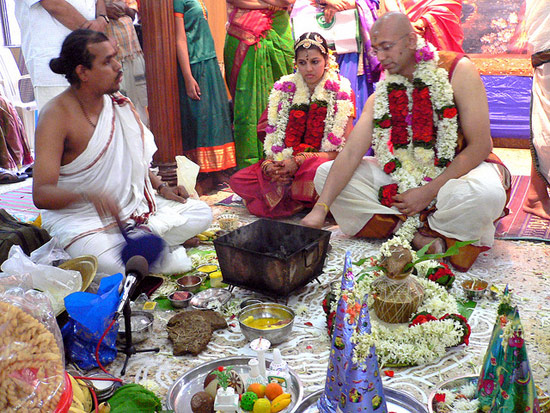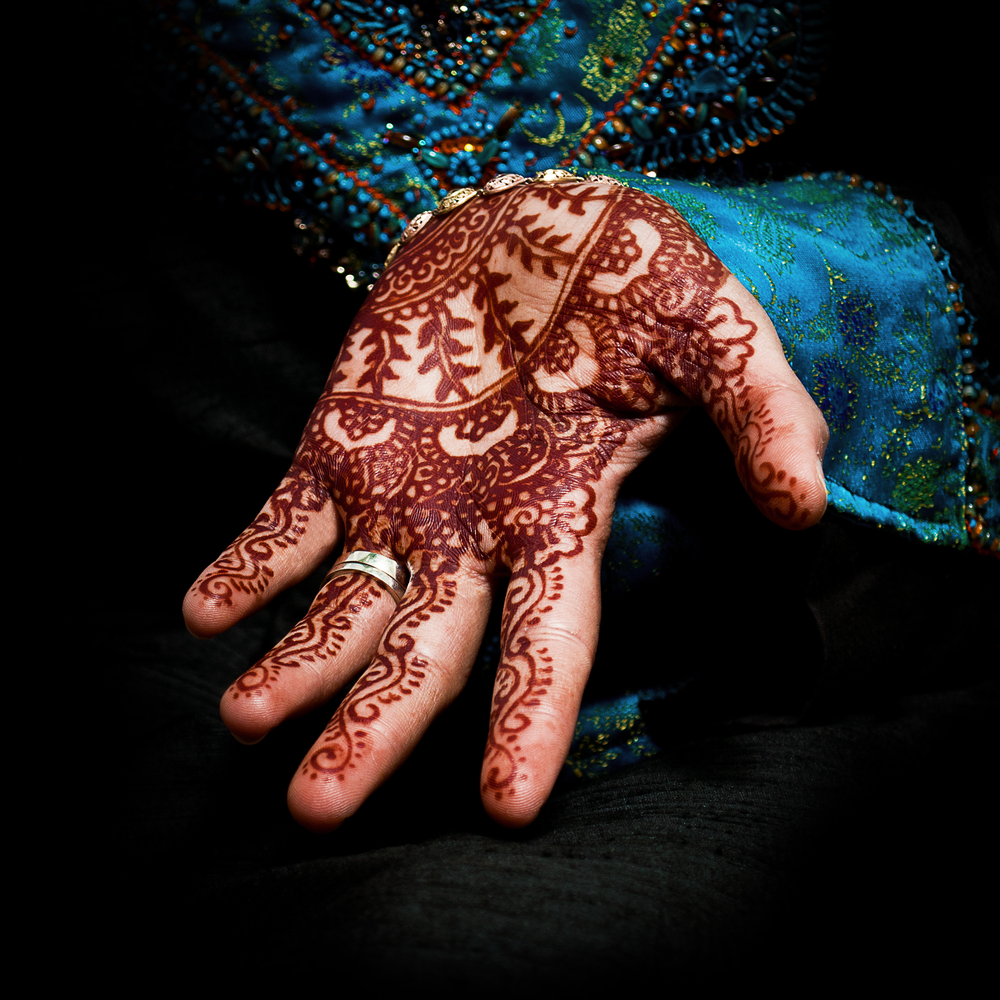Life Stages: Marriage
The institution of marriage holds supreme importance in Indian society and culture. Marriage remains the most celebrated event in the lives of individuals and families. Through the portal of marriage, men and women truly reach adulthood in India. Marriage traditionally created a sacred and indissoluble bond between a man and woman and, for many women, one that remained indissoluble even after the death of the husband.
Men and women in India can legally marry at the ages of 21 and 18, respectively. The average age at which men and women have married in India since the mid-20th century has dramatically changed; youths wait longer and longer to marry. The average marriage age is in the early to mid-20s heading toward the third decade of the 21st century.
Cultural Practices
Hierarchy proves very important in Indian marriages. Elder children generally get married first, and older brothers have to wait until their younger sisters (of marriageable age) marry before they can get married themselves.
The diversity in the way Indians celebrate marriages reflects the diversity of India’s ethnic, linguistic, and religious groups. Indian weddings, in contrast to the brief weddings of the West, require elaborate ceremonies before, during, and after the wedding, running up to several days. One of the most prevalent and wildly practiced prenuptial ceremonies, the mehendi, is mainly practiced in North India by both Hindus and Muslims. Mehendi is usually conducted at the house of the bride and consists of applying henna to the hands and feet of the bride to the accompaniment of singing and dancing. During the Hindu wedding, main rituals include kanyadaan (the handing over of the bride to the groom by the father or maternal uncle), the tying of mangalsutra (the holy knot), and saptapadi (the bride and groom circumambulating the sacred fire seven times).
The Muslim nikah (marriage), a contract (nikahanama) between the groom and the bride’s father, or guardian, takes place at the bride’s house. The nikah is performed only after meher (dowry) is negotiated by the parents of the bride and groom according to their social status. The nikah is complete when the boy reveals to a mediator his intention to marry the girl and the girl accepts the proposal in the presence of two witnesses.
Indians consider marriage the culmination of the passage of boys and girls into adulthood. This institution in Indian society grants its men and women the maximum freedom for physical and emotional bonding. Society also values marriage as the progenitor of the family and the nurturing ground of children.
Family Involvement
Parents and relatives, especially in-laws, have great say and involvement in the marriages of their children in the system of arranged marriages prevalent in India. Although most parents still arrange marriages in India, men and women increasingly have equal say in the choice of their life-partners. However, instances of women being married off without their consent occur not uncommonly, even now. After marriage, the couples generally live with the parents of the husband. However, an increasing number of couples are opting to set up house by themselves these days.
Traditionally, like in other patriarchal societies, Indians considered men the primary breadwinners while they relegated to women the responsibilities of looking after the home and children. Even though these roles remain true to a certain extent even now, the winds of change sweeping across the Indian landscape have witnessed women entering the workforce in large numbers and contributing almost equally to the family income.
Chastity remains the most precious attribute of an Indian woman, and the lack of it creates the most serious and unpardonable blot on her character. While society usually condones extramarital affairs among men, it stigmatizes women who participate and the action bears serious repercussions. Media reports and surveys indicate, however, an increase in the incidence of extramarital affairs among both men and women since the end of the 20th century.
Polygamy and polyandry are illegal in India. However, the Indian Constitution allows Muslims to follow their Shari’a code, which grants them the right to marry up to four wives.
The Indian Constitution grants equal rights to men and women within marriage. However, Muslim women face discrimination due to the application of Shari’a law in matters of marriage, divorce, and inheritance. Even many women married under the equitable civil laws face discrimination due to their lack of awareness of the laws and their timidity in challenging tradition. Recent years have seen many intrepid women approaching the judiciary for redressing their disabilities within marriage.
Divorce is legal in India, and men and women have equal rights to initiate divorce proceedings. Shari’a laws regarding divorce discriminate highly against Muslim women. Men, by uttering the triple talaq ("I divorce you") in front of at least two witnesses can obtain a divorce, while women have to go through a cumbersome procedure on specific grounds. Shia women won a victory of sorts in 2006 when the Shia Muslim Board gave women the right to divorce and redefined marriage as a contract that can be enforced in a court of law.
Divorces can be obtained by filing a petition in the family court by either of the spouses on several grounds including adultery, desertion, mental unsoundness, non-consummation of marriage, mental and physical cruelty, and imprisonment of either spouse for a period of seven years or more.
Women have rights to maintenance, and equal rights to custody of children. However, governing authorities set maintenance amounts at an insufficient figure, and husbands often flout even that. Muslim women get custody of male children below 7 years old and prepubescent female children.
Persistent Traditions
Even after almost 60 years of independence and the enactment of various salutary legislations, the issue of widow remarriage remains a contentious issue in Hindu society. For centuries, Hindu widows have been oppressed in various ways following the dictum of Manu (India’s ancient semi-mythical law giver) who declared in his Manusmriti (Laws of Manu): "Her father protects (her) in childhood, her husband protects (her) in youth and her sons protect (her) in old age; a woman is never fit for independence."
Marriage was considered an indissoluble bond between a man and woman, indissoluble even after the death of the husband. Thus was born the infamous and cruel custom of Sati in which widows were expected to immolate themselves in the funeral pyre of their husbands. The British abolished the custom in the 19th century at the instigation of social reformers like Raja Ram Mohan Roy, who proved that most cases of Sati were nothing but murder in religious guise for the purpose of appropriating the widow’s property. There have been only 40 cases of Sati in India since independence in 1947. In 1987, however, 18-year-old childless widow Roop Kanwar, wearing her red wedding finery, was forcibly immolated in the funeral pyre of her husband in the presence of several thousand people, in the northern Indian state of Rajasthan. Devout Hindus worshipped her as Sati mata (pure mother) after her death.
The many child widows of Rajasthan, and the numerous white-clad, tonsured, Brahmin widows of Varanasi (Benaras) who are sometimes forced into prostitution, provide two of the most extreme examples of India’s social attitude toward widows.
Copyright © 1993—2025 World Trade Press. All rights reserved.

 India
India 
